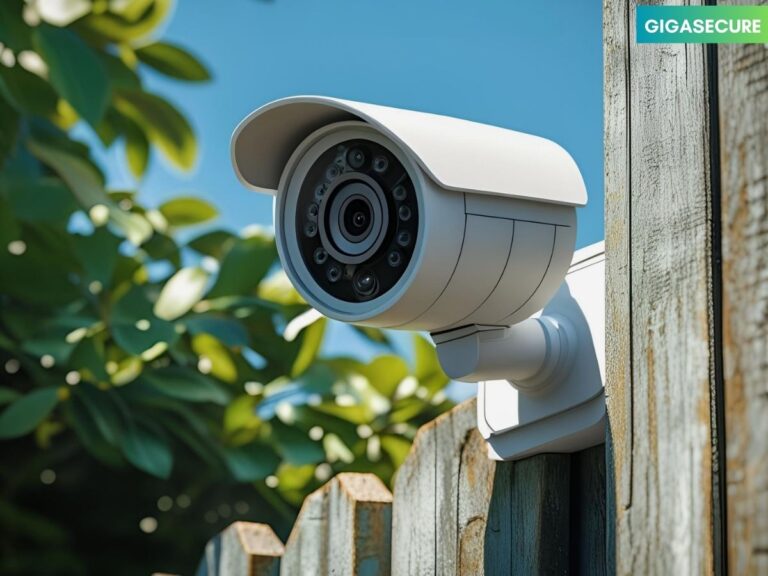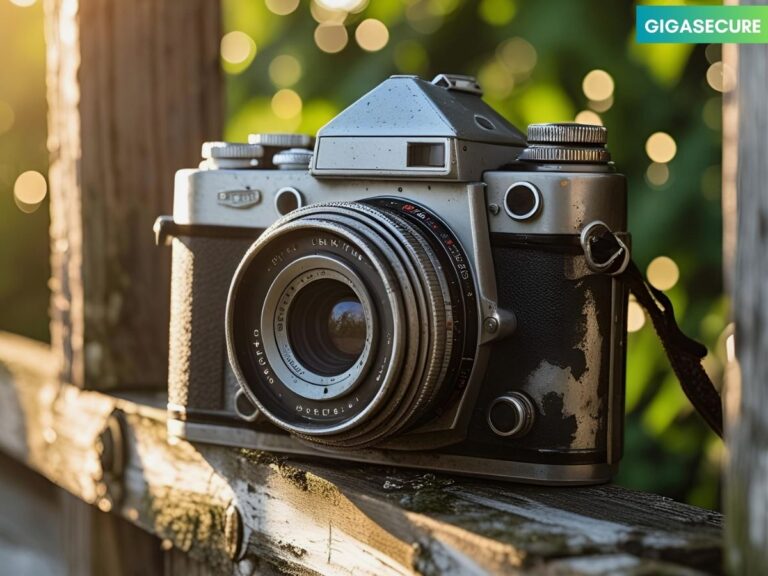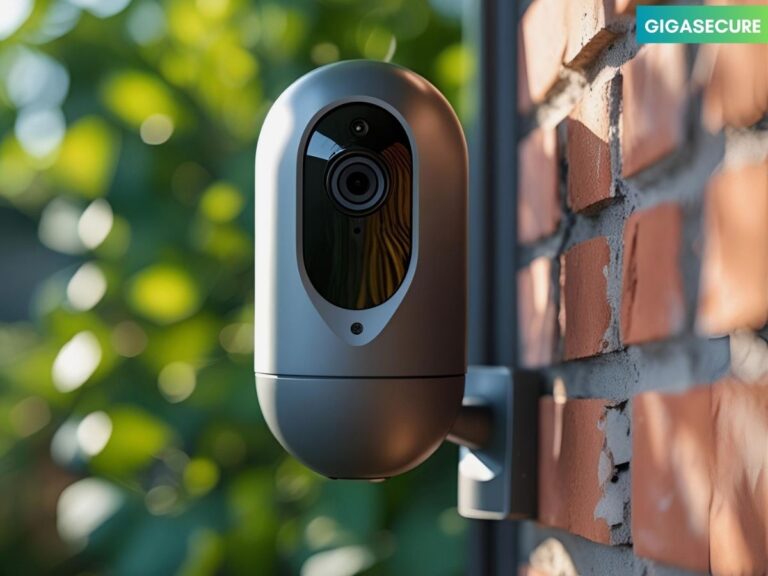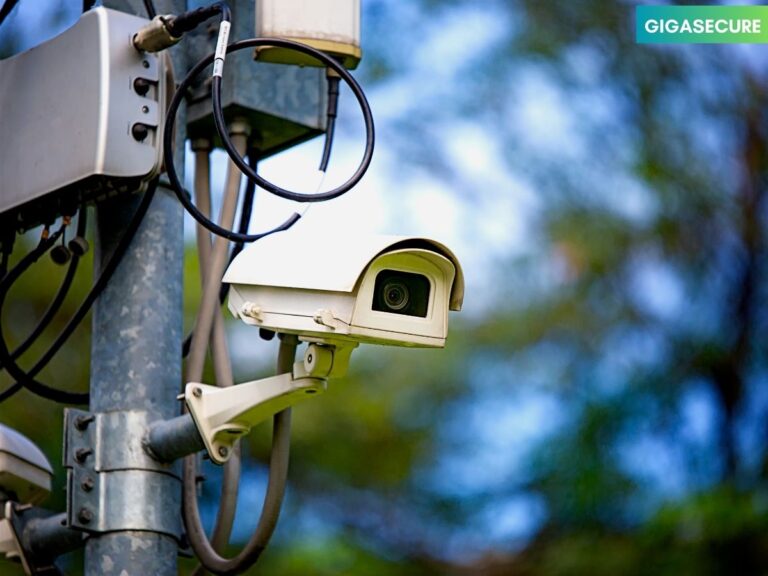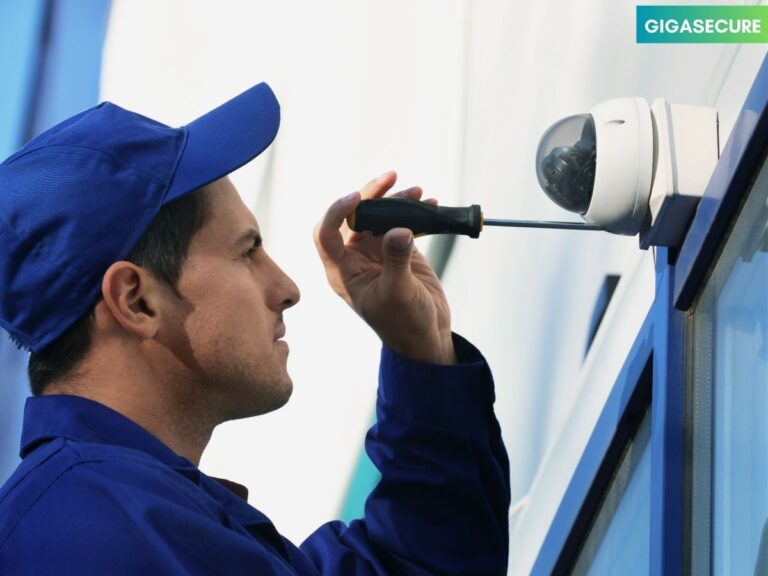Outdoor Cameras with Facial Recognition: Are They Legal?
As I look into security cameras, a big question pops up: are cameras with facial recognition legal? This question is key as we try to find the right balance between safety and privacy.
In this article, I’ll dive into the legal side of facial recognition in cameras. We’ll look at the laws now and what might happen in the future. Knowing this will help you make smart choices about your security.
Key Takeaways

Understanding Facial Recognition Technology in Outdoor Cameras
Outdoor cameras with facial recognition are getting more popular. It’s important for homeowners and businesses to know how they work.
Facial recognition technology is a smart tool in surveillance systems. It lets cameras identify and match faces against a database.

How Facial Recognition Works in Security Cameras
Facial recognition software uses complex algorithms to analyze facial features from video. It goes through steps like face detection, feature extraction, and comparing against a database of known faces.

Types of Facial Recognition Features Available Today
Outdoor cameras offer different facial recognition features. Some just detect faces, while others can identify specific people or track their movements.
Difference Between Consumer and Commercial Systems
Consumer-grade facial recognition is for personal use, like home security. It has fewer features than commercial systems.
Commercial systems are more advanced, with features like real-time alerts and bigger databases.
| Feature | Consumer Systems | Commercial Systems |
|---|---|---|
| Face Detection | Basic | Advanced |
| Identification Capability | Limited | Extensive |
| Real-time Alerts | Optional | Standard |
Knowing these differences helps you pick the right facial recognition technology. Whether for your home or business, it’s key to choose wisely.
The Current Legal Landscape for Facial Recognition
Facial recognition in outdoor cameras faces a tough legal landscape. Many laws and regulations apply. It’s key for both people and businesses to know these rules.
Federal Laws and Regulations
There’s no single federal law for facial recognition yet. But, many federal groups are looking into it. The Federal Trade Commission (FTC) has given guidelines. They stress the importance of being open and getting consent.
I’ll look at the federal laws and rules in the U.S. I’ll focus on how they affect facial recognition in outdoor cameras.
| Agency | Guidelines/Regulations | Key Aspects |
|---|---|---|
| FTC | Guidelines on Facial Recognition | Transparency, Consent |
| DOJ | Guidelines for Law Enforcement | Use in Investigations, Privacy Considerations |
Notable Court Cases
Many court cases have set important rules for facial recognition. For example, challenges to law enforcement’s use of facial recognition have led to key rulings. These have shaped the legal scene today.

Law Enforcement vs. Private Citizen Use
There’s a big difference between law enforcement and private use of facial recognition. Law enforcement has rules, but private use doesn’t. This raises privacy and misuse worries.
It’s vital to understand these differences. They help us deal with the legal issues around facial recognition technology.
State-by-State Regulations on Facial Recognition
Facial recognition technology is getting more common in outdoor cameras. It’s important to know the laws about it in the U.S. Each state has its own rules, making it tricky for people and businesses to follow.
States with Strict Facial Recognition Laws
Some states are leading the way in controlling facial recognition. California, Illinois, and Washington have strict rules about its use.
- California: The California Consumer Privacy Act (CCPA) limits how facial recognition data is used.
- Illinois: The Biometric Information Privacy Act (BIPA) makes sure people agree before their biometric data is collected.
- Washington: Washington State has rules for law enforcement using facial recognition.
These laws focus on being open and getting consent. A study by the Electronic Frontier Foundation shows how important it is to know and agree to facial recognition use.
“The use of facial recognition technology raises significant privacy concerns, and regulations are necessary to protect individuals’ rights.”
Albert Fox Cahn, Executive Director, Surveillance Technology Oversight Project
States with Minimal or No Specific Regulation
On the other hand, some states don’t have clear rules about facial recognition. This makes things harder for people and businesses.
| State | Regulatory Status | Notable Aspects |
|---|---|---|
| Texas | No specific regulation | Lack of a complete state law |
| Florida | Minimal regulation | Some local rules might apply |
| New York | Proposed legislation | Pending bills could change the rules |
Recent Legislative Developments and Proposed Bills
The rules for facial recognition are always changing. New laws and bills are being proposed. Some aim to limit how police use facial recognition.

As facial recognition tech gets better, more states will likely make laws about it. Keeping up with these changes is key for those using facial recognition in outdoor cameras.
Privacy Concerns and Ethical Considerations
Facial recognition technology is becoming more common in outdoor cameras. This raises big concerns about privacy and ethics.
The use of facial recognition in security cameras is a major worry, mainly about individual privacy rights.
Consent Issues with Capturing Facial Data
One big worry is consent. People might not know their facial data is being captured and stored. This lack of control over personal data is a big privacy issue. To fix this, clear signs should be used to tell people facial recognition is happening.

Data Storage, Security Risks, and Possible Misuse
Storing facial data is a big security risk. If not secured well, it can be stolen and misused. For example, hackers could use it for identity theft. It’s key to have strong data protection to avoid these problems.
- Implementing end-to-end encryption for stored facial data
- Conducting regular security audits
- Limiting access to authorized personnel
Impact on Neighbors, Visitors, and Passersby
Facial recognition cameras can affect more than just homeowners. They can also impact neighbors, visitors, and people just passing by. These people might be scanned without knowing it, raising big privacy concerns.
Discrimination and Bias in Facial Recognition Systems
Another big issue is bias in facial recognition systems. Some studies show these systems can be less accurate for certain groups.
This could lead to unfair treatment. It’s important to test these systems for bias and fix any problems found.
By understanding these privacy and ethical issues, we can use facial recognition technology responsibly. This way, we can balance security needs with protecting individual privacy rights.
Outdoor Cameras with Facial Recognition: Are They Legal?
It’s important to know the legal side of using outdoor cameras with facial recognition. This is true for both homeowners and businesses. The laws can change a lot based on where and how you use these cameras.

Residential Use Legal Status and Considerations
At home, using facial recognition cameras is usually okay, but there are things to think about. You need to know the laws in your area. Some places have special rules about facial recognition tech.
Telling people about the cameras is key. A sign saying you use facial recognition can help avoid trouble. Always check local laws and your HOA rules before setting up these cameras.
Commercial Property Legal Requirements
Businesses have to follow stricter rules with facial recognition cameras. They must follow federal and state laws, like data protection and privacy rules. Businesses might need to get permission from people whose faces are recorded.
| Commercial Use Requirement | Description |
|---|---|
| Data Protection | Implement robust data security measures to protect facial data. |
| Consent | Obtain explicit consent from individuals whose facial data is being collected. |
| Notification | Clearly notify the public about the use of facial recognition technology. |
Homeowners Association Rules and Rental Property Restrictions
HOA rules and rental laws can affect using facial recognition cameras. Some HOAs might not allow or limit these cameras.
“Property owners should review their HOA agreements and local rental laws to ensure compliance before installing facial recognition cameras.” – Legal Expert
For renters, landlords must tell tenants about facial recognition cameras. They also need to follow privacy laws. It’s wise for property owners to talk to lawyers to understand these rules.
Potential Legal Liabilities for Homeowners
Using outdoor cameras with facial recognition can lead to legal problems for homeowners. It’s important to know these risks to avoid them.
Invasion of Privacy Claims and Lawsuits
Outdoor cameras with facial recognition can lead to privacy invasion claims. People might say their privacy was broken if they’re caught without consent.
To avoid this, learn about your state’s laws on surveillance and facial recognition. Some states have strict rules, while others are more relaxed.
Notification and Consent Requirements
It’s key to notify people and get their consent to use facial recognition cameras. Showing clear signs that you’re recording can help.
How you must notify people varies by law. Some places require telling people they’re being recorded and how their data will be used.
Data Breach Responsibilities and Consequences
Facial recognition cameras can also lead to data breaches. If your data isn’t secure, hackers could get it, causing big legal and financial problems.
Make sure to protect your camera data well. Use strong security and follow data protection laws.
Liability Insurance Considerations
Getting liability insurance for facial recognition cameras can help protect you. It can cover costs if you face lawsuits.
When picking insurance, check the details. Make sure it covers facial recognition risks.
| Potential Liability | Description | Mitigation Strategy |
|---|---|---|
| Invasion of Privacy | Claims of privacy violation by neighbors, visitors, or passersby | Clear signage, consent where required |
| Data Breach | Unauthorized access to recorded data | Robust security protocols, compliance with data protection regulations |
| Lawsuits | Legal actions resulting from misuse of facial recognition data | Liability insurance, adherence to local laws and regulations |

Best Practices for Legal Compliance
To follow the law, it’s key to know how to use outdoor cameras with facial recognition. Homeowners and businesses must keep up with changing laws to avoid trouble.
Proper Signage and Notification Methods
Clear signs and notifications are essential. Post signs at entrances and around your property. Clear notification is key to avoid privacy claims.
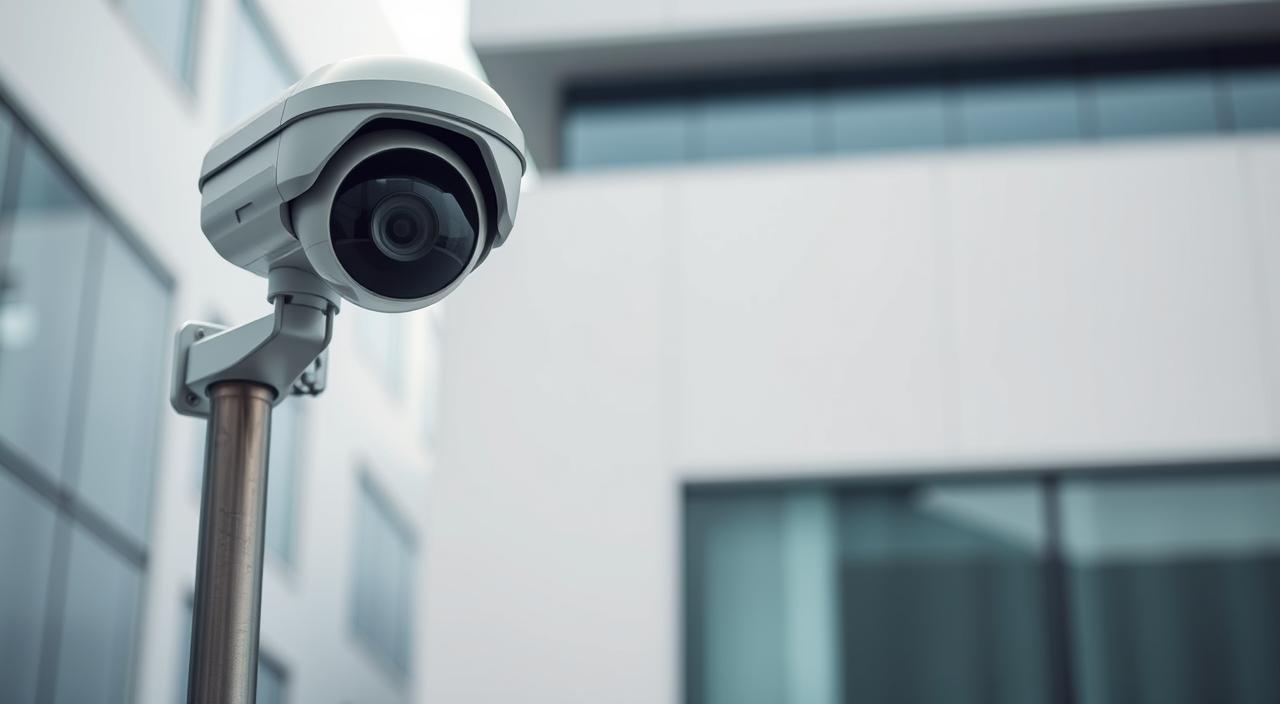
Creating Appropriate Data Retention Policies
Creating a data retention policy is critical. It should say how long facial recognition data is kept and when it’s deleted. Limiting data retention reduces data breach risks.
Limiting Recognition Scope and Usage Boundaries
It’s important to limit facial recognition technology’s use. Define its purpose and ensure it’s not misused. Narrowing its use prevents misuse.
Staying Updated on Changing Regulations
Facial recognition laws are always changing. Keeping up with these changes is vital. Check government sites and industry news for updates.
The Future of Facial Recognition Regulation
Facial recognition technology is getting more advanced, making the rules around it more complex. It’s important to have clear laws about facial recognition. Many groups are working to shape these regulations.
Pending Federal Legislation
Congress is looking at several bills to control facial recognition. These laws aim to address consent, data safety, and police use of the tech.
Some key parts of these bills include:
- Rules for when facial recognition is used
- How facial recognition data is stored and shared
- Limitations on facial recognition use in specific situations
Industry Self-Regulation Efforts
Without federal laws, companies are making their own rules for facial recognition. They try to find a balance between the tech’s benefits and privacy concerns.
| Company | Policy Highlights |
|---|---|
| Amazon | One-year moratorium on police use of facial recognition |
| Microsoft | Calls for federal regulation, limits law enforcement use |
| IBM | Has ended sales of facial recognition software, advocates for legislative reform |
International Trends Influencing US Policy
How countries handle facial recognition varies, with some being stricter than others. These global trends are affecting the US debate.
The European Union’s GDPR sets a high bar for data protection, including facial recognition. This affects US companies in Europe and could influence US laws.

The future of facial recognition rules will mix federal laws, company self-regulation, and global trends. As the tech grows, it’s vital that rules evolve to protect people’s rights and allow for useful applications.
FAQ Of Outdoor Cameras with Facial Recognition: Are They Legal?
Are outdoor cameras with facial recognition legal in the United States?
The legality of outdoor cameras with facial recognition depends on where you are. It also depends on if you own a home or a business.
What are the laws regarding facial recognition technology in public places?
Laws about facial recognition in public places vary by state. Some states, like California, Illinois, and Washington, have stricter rules.
Do I need to notify people that I’m using facial recognition cameras on my property?
Yes, you should let people know if you’re using facial recognition cameras. This helps avoid privacy issues. Use clear signs or notifications.
Can I use facial recognition cameras on my rental property?
Using facial recognition cameras on rental properties might have specific rules. Always check your local laws and talk to your property manager or lawyer.
How can I ensure I’m complying with facial recognition regulations?
To follow the rules, keep up with new laws. Make sure to post signs and notify people. Also, have a plan for how long to keep data and what you can do with it.
What are the possible consequences of misusing facial recognition technology?
Misusing facial recognition can lead to privacy claims and lawsuits. It can also cause data breaches. This shows why it’s key to know and follow the laws.
Are there any industry standards or best practices for using facial recognition in outdoor cameras?
Yes, there are guidelines for using facial recognition technology. These include how to store data, keep it secure, and be open about it.
How do I stay updated on changing facial recognition regulations?
To stay current, check updates from government agencies and industry groups. Also, look at legal resources. You might want to talk to lawyers who know about facial recognition laws.
Conclusion
Outdoor cameras with facial recognition bring up many legal questions. It’s important to know the current laws to follow them and avoid trouble.
Keeping up with new rules and practices is key. This way, you can use facial recognition safely and avoid legal problems.
Important steps include putting up clear signs, setting data policies, and using facial recognition wisely. This helps protect privacy while keeping places safe.
As technology gets better, we must stay alert. This ensures our use of facial recognition cameras stays legal and addresses new issues.

